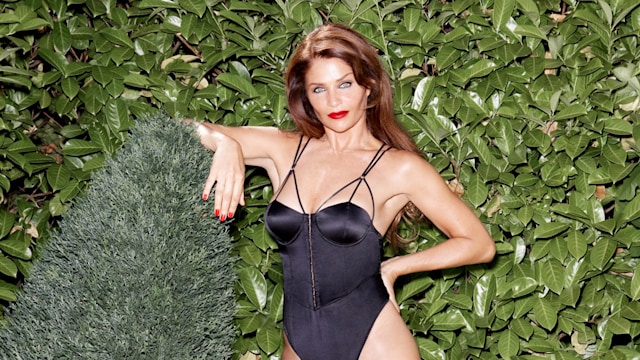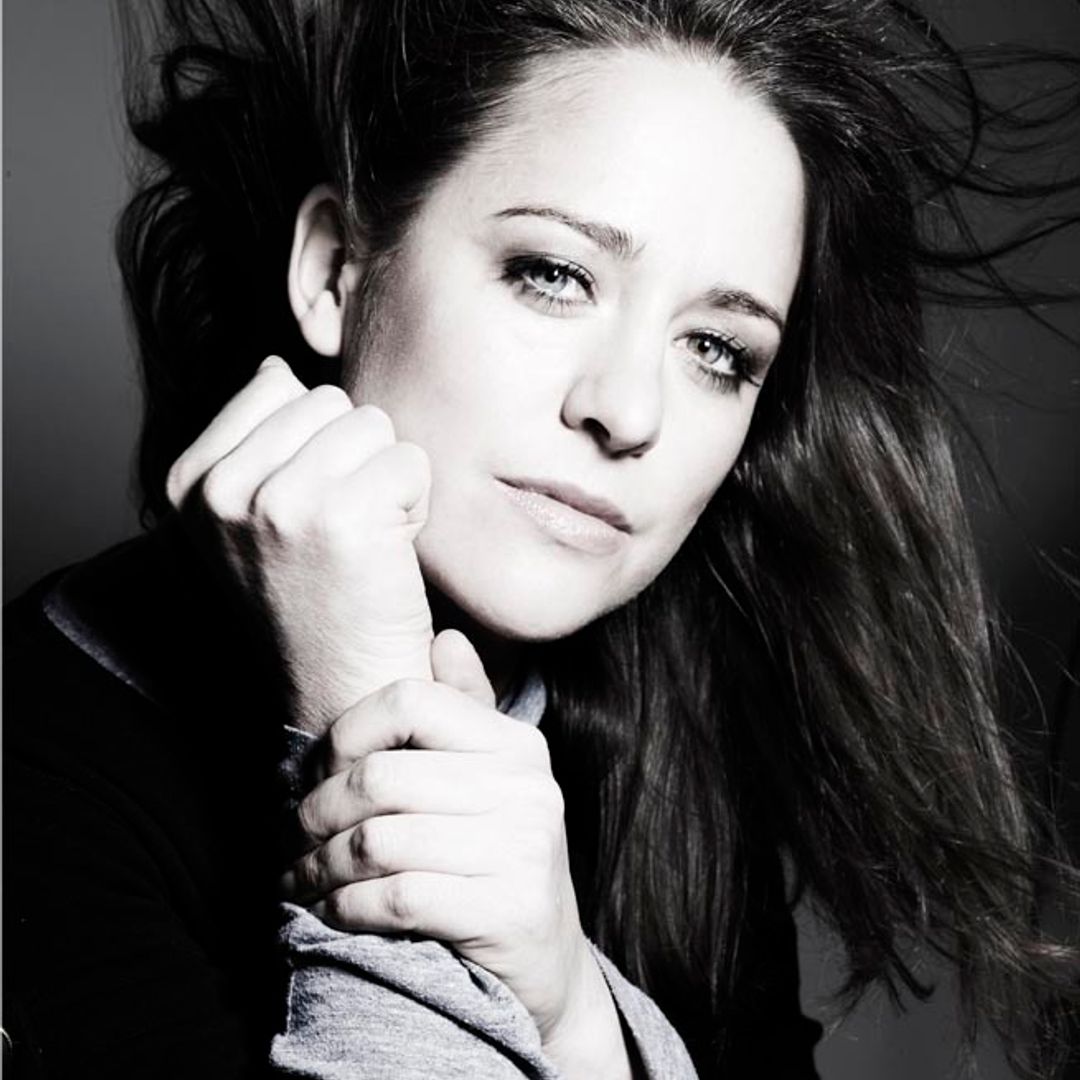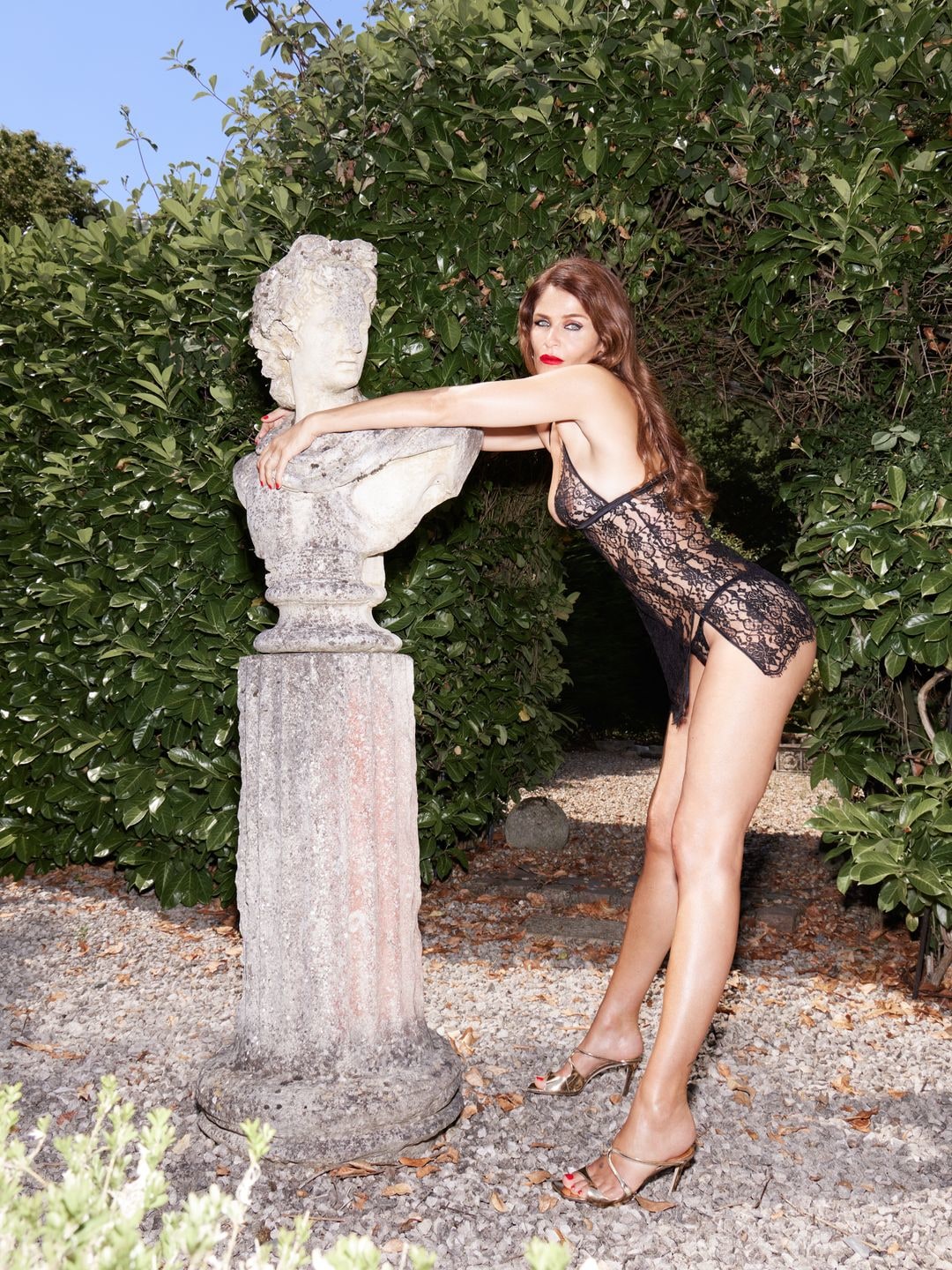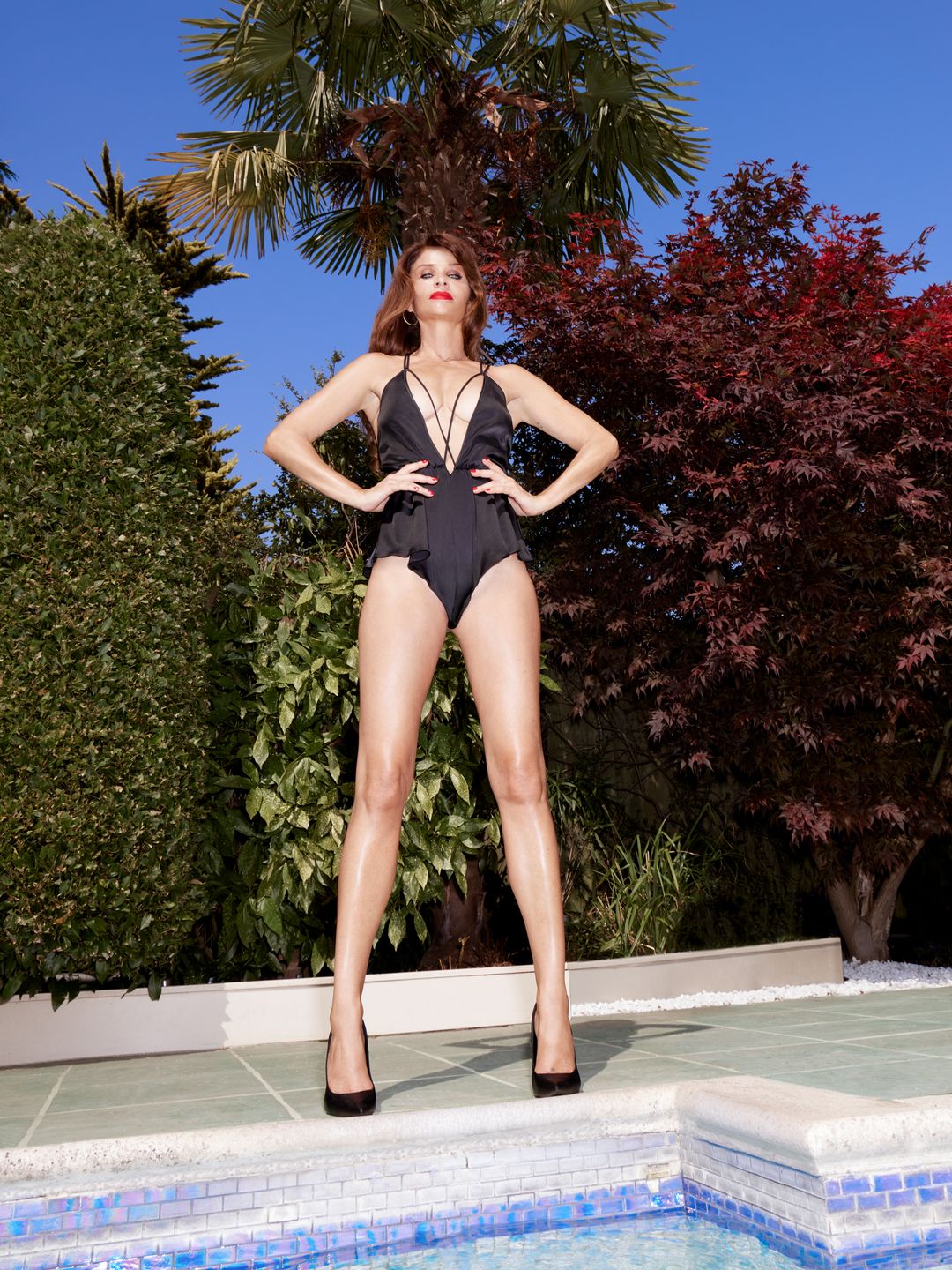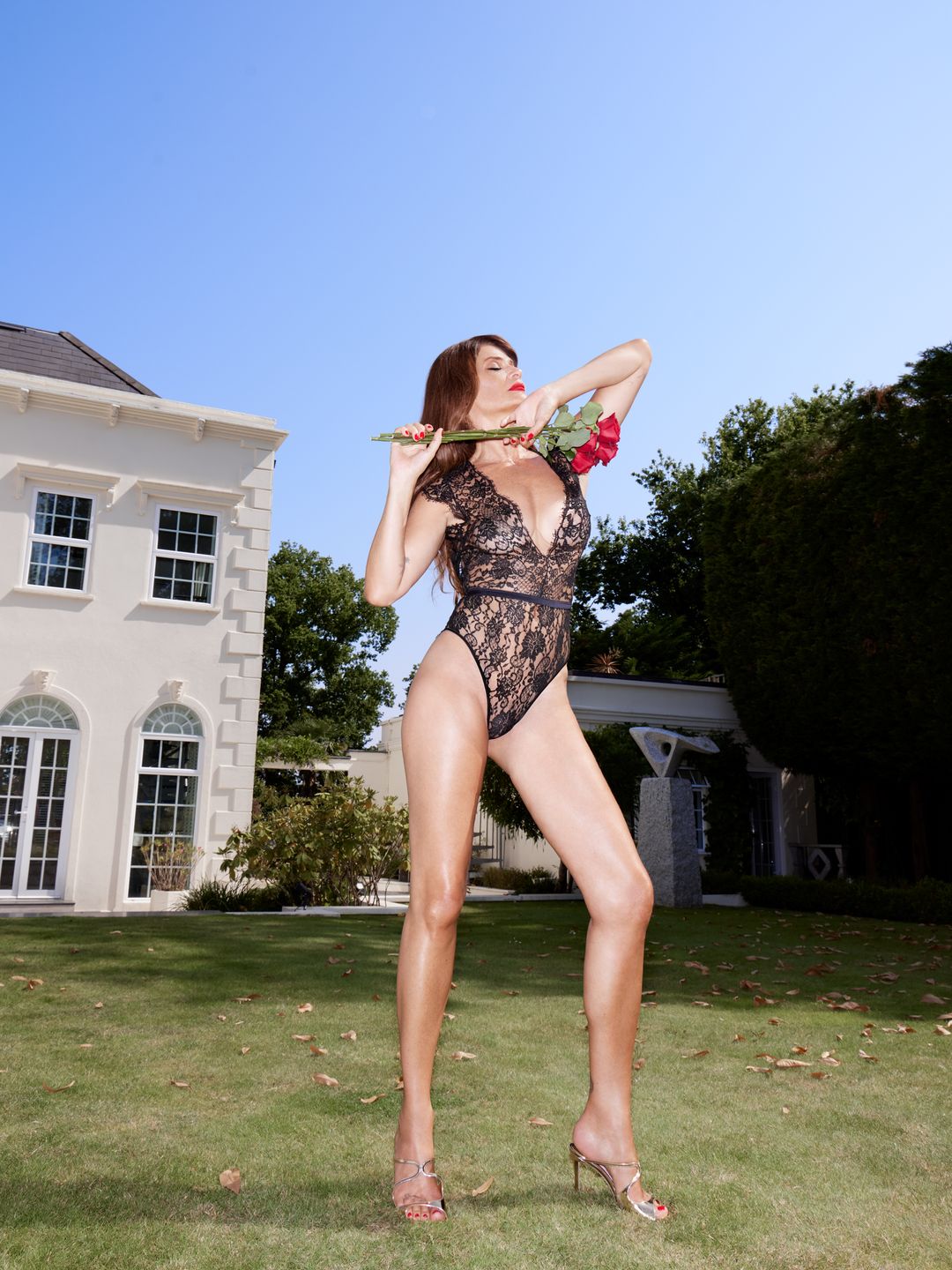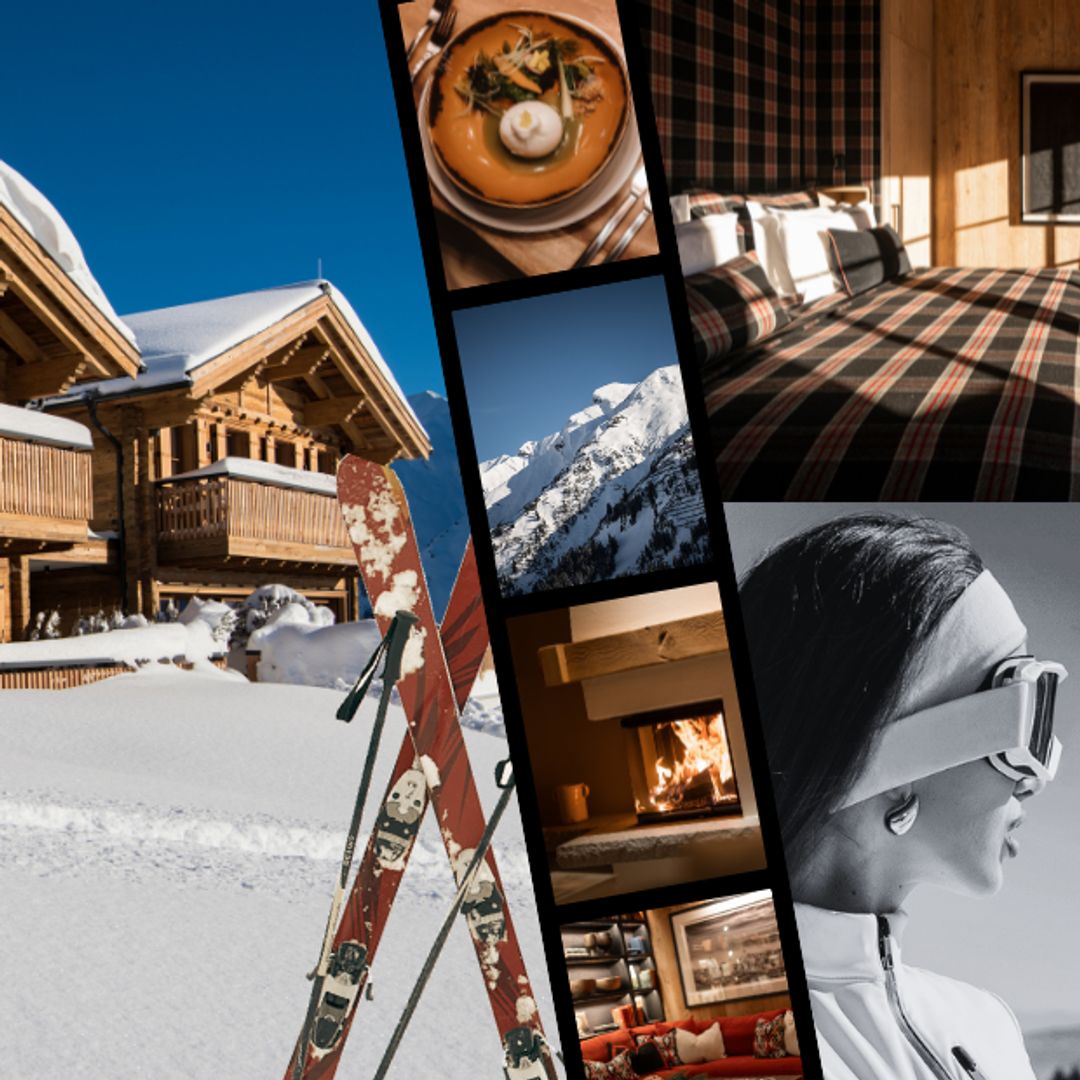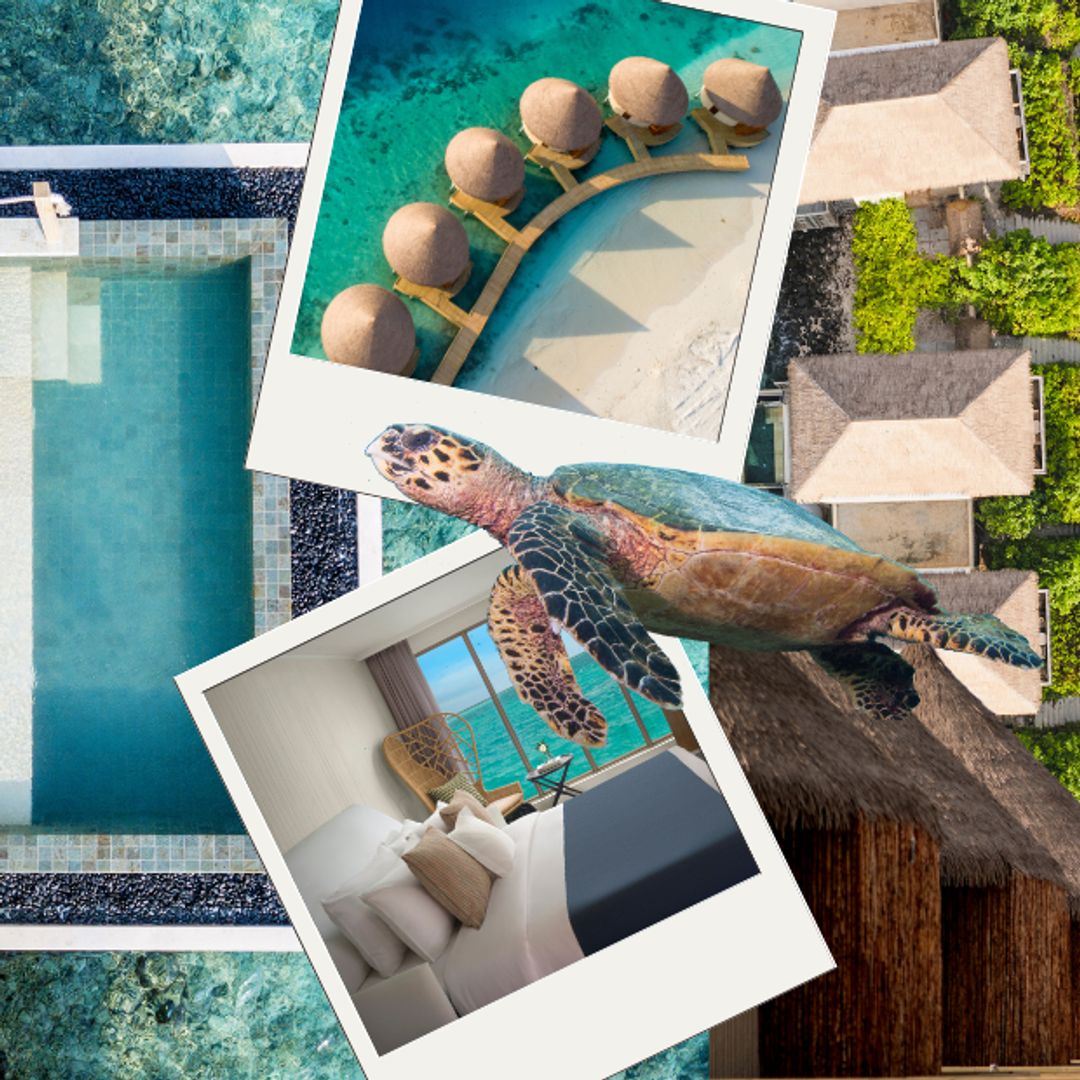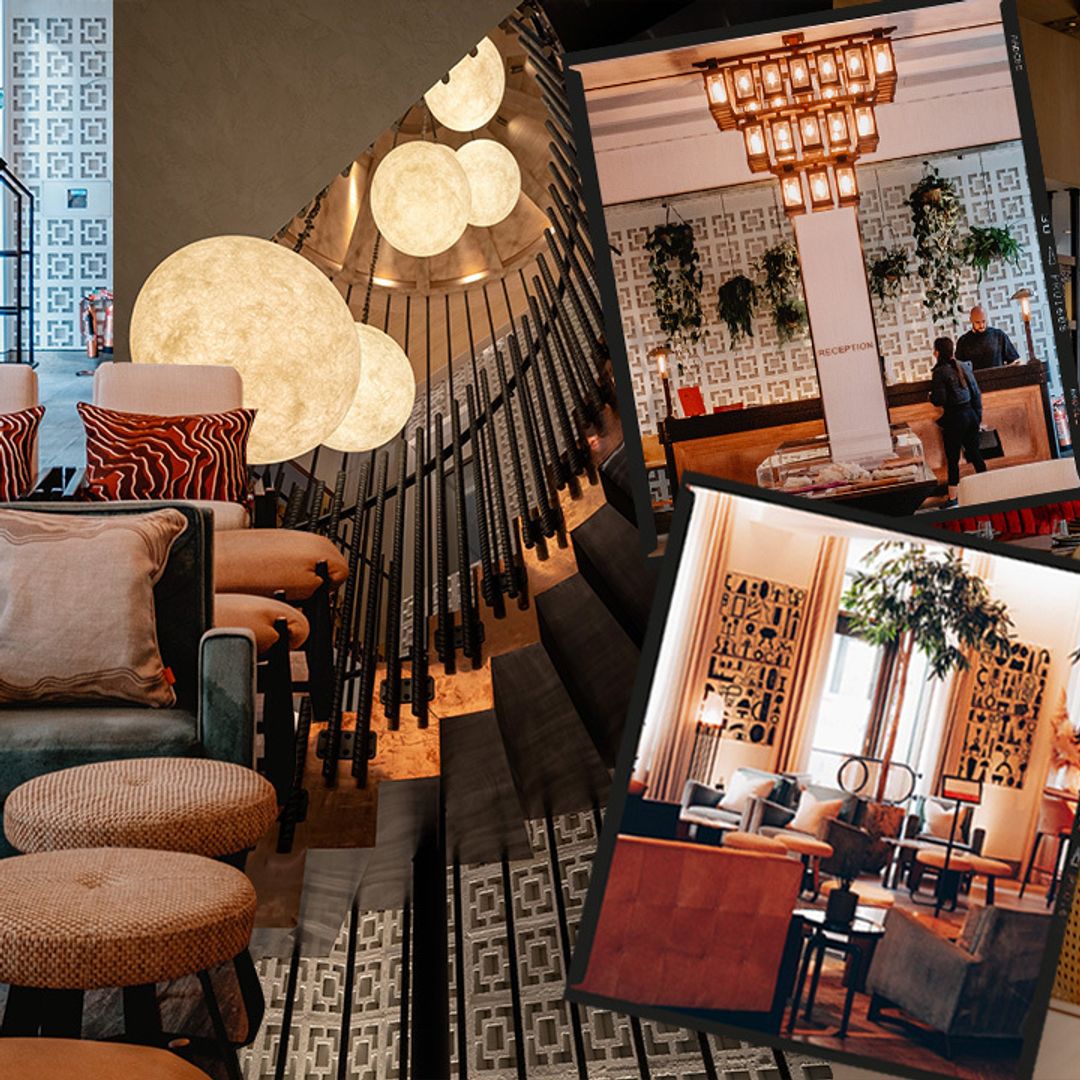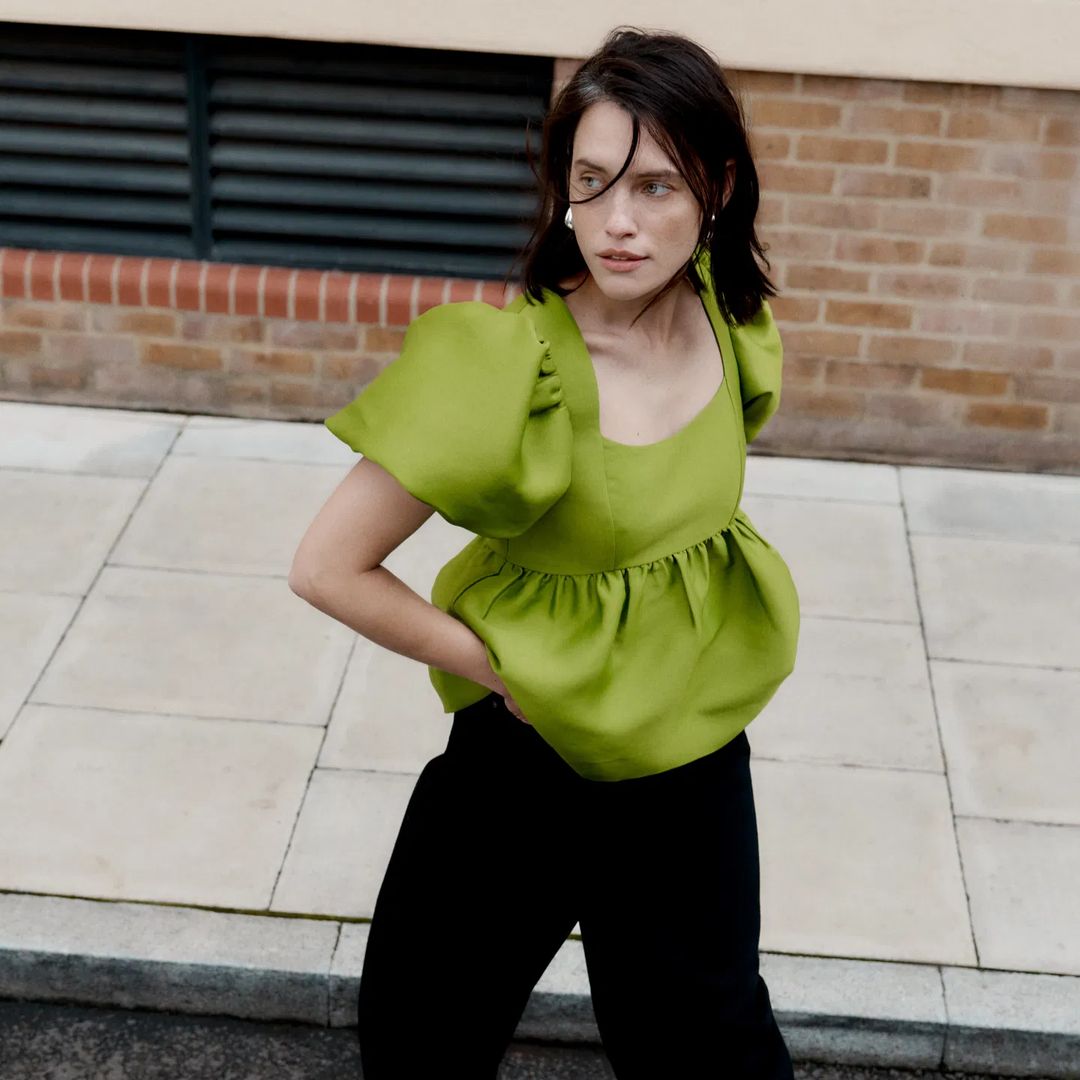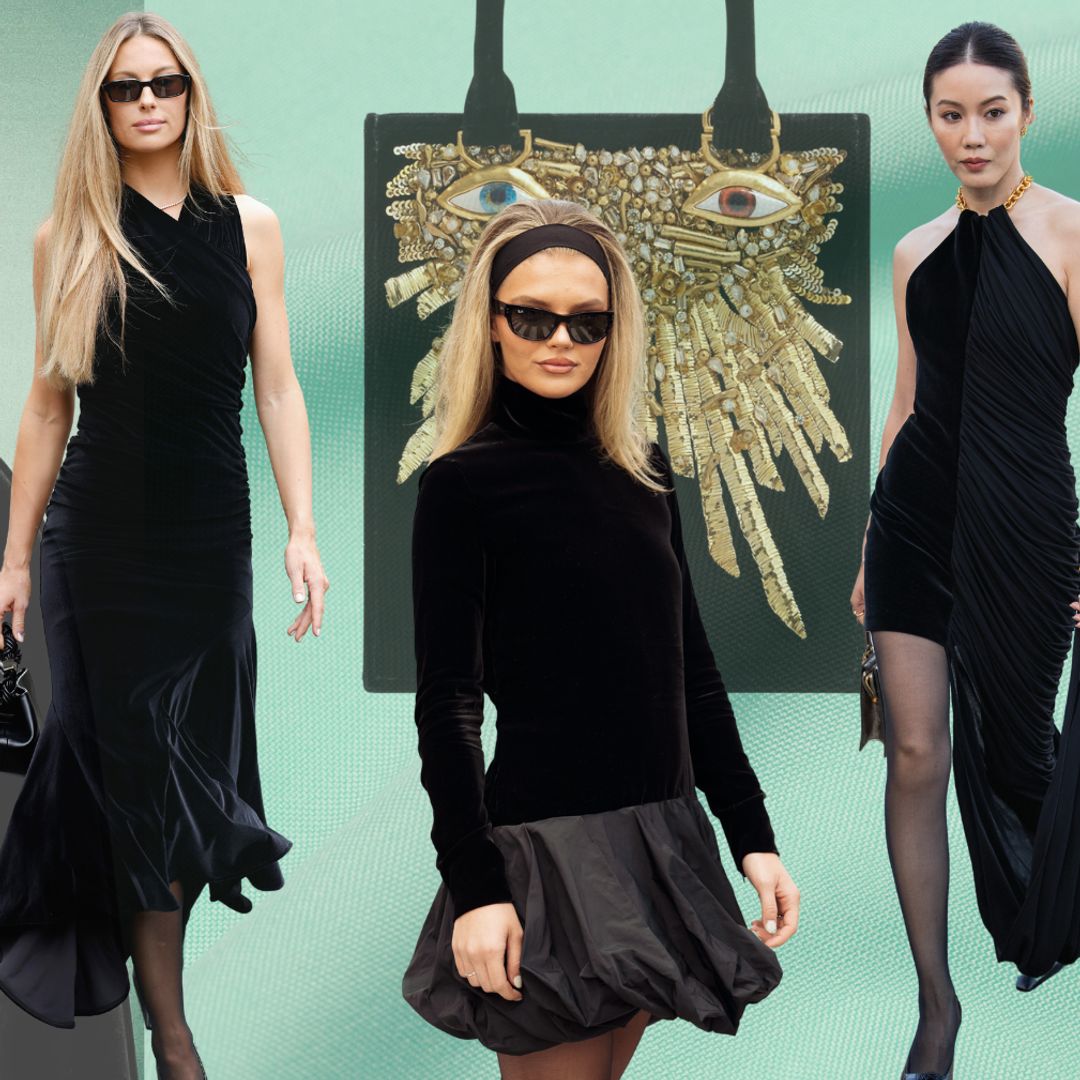Memories that Helena Christensen made during the “very intense, hectic and mind-blowing” 90s are still coming back to her now. Alongside Christy Turlington, Naomi Campbell, Linda Evangelista, Cindy Crawford, Claudia Schiffer and Elle Macpherson, these original supermodels became as famous, if not more so, than the designers whose clothes they modelled.
Beautiful for their originality and personality, in 1996 Frank DeCaro of The New York Times dubbed them 'The Magnificent Seven', declaring they were known simply by their first names to their many fans.
MORE: Meet the brand turning Hermès towels into couture jackets
“People tell me how much joy they have had growing up with the fashion, images and group of girls I was with,” she tells us from her mountain hideaway in the Catskills, upstate New York. “Very tender declarations of how much it meant to them and how much it means to them still.” Being the most in-demand models in fashion history, the supers would do eight shows a day during the international collections and worked for every big-name brand and prestigious magazine.
Working hard, but driving each other, at the height of her success she couldn’t comprehend the magnitude of their collective force. “It took me a long time to know what it really was and it’s actually still hard to describe.
“Everything fell into place in a divine moment, because it was so special and unique and kept having that effect and impression and influence. I sometimes talk about myself during that time in the third person, and then I realise... you were there, you were part of it – and that makes me feel so proud and grateful.” Known for her trademark red lips and dark eyeliner, today Helena, who is comfortably slouched on a sofa with her pet dog Kuma at her side, radiates her pared-back natural beauty: fresh-faced; hair tied into a top-knot and wearing an oversized sweater.
Born in Copenhagen, Helena is Danish on her father’s side and her mother Elsa, who owns a vintage shop called Yo-Yo in Christianshavn, is Peruvian. Helena’s modelling career started at 17 when she won the Miss Universe Denmark crown in 1986. She then represented Denmark in the Miss Universe 1986 pageant in Panama. The following year she became a finalist in the Look of the Year 1987 competition, subsequently leaving home to pursue modelling in Paris.
MORE: Leonie Hanne on how she made it as an Influencer in a "saturated" market
RELATED: Eva Apio on breaking the mould and giving back through her foundation
Now a successful photographer, she tells us that she began modelling to further her experience behind the camera. “I figured I can model for a little bit to travel the world and bring my camera to take photos and just explore and discover. The funny part of it is, to me, the modelling for many years was about a great opportunity to learn about photography.” And it worked. She travelled the world, often visiting some of the most distant and interesting places, with the most legendary photographers. “I had the best teachers right in front of me, educating me in photography and guiding me through – it could not have been a more incredible situation.”
And, although she’s had many pinch-me moments in her career, she tells us that working with these greats was definitely the most prodigious. “The fact that I only just made it in time to work with these old-school photographers is still something that is amazing. Irving Penn, Helmut Newton and Herb Ritts were the last of the legends who are all gone now. And I don’t know if there will ever be a group of classic photographers like that again.
“I happened to be around for that split second of time to work closely with these people and be conveyed through their lens. That, to me, is something I’m immensely grateful for. And that’s probably the biggest gift I’ve been given from all these years.” Adding to the magic, photographers for the first ten years of Helena’s career shot in film, rather than digital, which is more or less exclusively used by photographers today. “There is absolutely no comparison to analogue film and Polaroids. Digital is amazing and endlessly beneficial: it’s fast and easy – you can do so much with it, but it will never, ever replace what film does in capturing a spirit in a completely different way.
RELATED: Model Roos Abels on walking for the world's biggest designers, and staying grounded through family
“If you blow up an analogue print you see every little grain, all the tiny little dots that make up someone’s face – it’s almost like looking at all the millions of atoms that make up a human being. Film shows a glint in the eye and the texture of the skin in a completely different way.”
She goes on to explain how the resolution of digital is actually too sharp. “There are so many arguments for or against retouching and filters, and yes, there are some crazy examples out there, but the fact is that the definition of digital is so high it actually doesn’t represent how you are. Film shows the many layers of someone much more accurately than digital will ever do.”
Another thing that has changed since the beginning of her modelling career is Instagram, so is she thankful it wasn’t around in the 90s? “I’m very grateful for that,” she smiles. “It seems I was born at the perfect moment, I was not subjected to all of that in my childhood and growing up. And my kid [son Mingus she shares with actor Norman Reedus] almost made it through without too much of it and I’m super grateful for that as well.” Now she uses her Instagram account, which has one million followers, in a “constructive way” for work or to keep in touch with family. “With social media, technology and all of those modern creations, I’m still extremely... I barely use my computer,” she laughs.
Something she does often post on Instagram are images and videos of her wild swimming in (sometimes ice cold) lakes near her home in the Catskills – one of the many activities that has helped her maintain her incredible body that, in 1994, designer Gianni Versace described as “the most beautiful in the world”.
One of her recent modelling jobs, that showed off her lithe tanned limbs and washboard stomach, was the The Female Gaze Redefined shoots for lingerie brand Coco de Mer. “The first one was my gaze, because it was a self-shoot,” she says, of the campaign she photographed and directed herself, shot in her own bathroom, bedroom and living room.
“The second was a lot of female gazes, as we were a team of women.” The all-female crew comprised creative director Lucy Litwack, photographer Claire Rothstein, stylist Bay Garnett, make-up artist Ruby Hammer and hair was by Samantha Hillerby. It was shot in an English country garden last summer – on the hottest day on UK record. “You could really feel that each of these creative women know their craft so well. It gave the day a beautiful flow and it was a very inspiring environment – it made everyone feel proud of each other.”
Helena has been a long-term friend of the brand and its owner Lucy Litwack. She describes visiting the store as one of the highlights of trips to London. “I would always make sure that my first stop was going to the store and enjoying myself looking at all the beautiful intricate pieces. “I’ve always been a fan of lingerie and vintage lace, so the pieces really speak to me. I’ve always known of the brand and now I have a very personal relationship with everyone that works there.”
Building a relationship in a job that often entails working with completely new crews each time, is something that Helena appreciates. “It makes you feel like you’re more connected and you have a different relationship with the products when you actually know the people behind the brand who have worked so hard to create it – you know their dream, so it’s always an honour when you’re the one presenting them.”
The history of lace and lingerie is something that Helena has been passionate about for many years. “I have so many different types of lingerie, from Coco de Mer to big, cotton comfortable underwear; also vintage finds, body stockings and knitted pieces. “I feel like the world of lingerie is really quite interesting and exciting to explore. There’s so much to those tiny little garments that are the first thing we put on our skin when we get dressed – there is this very intimate and beautiful relationship that you have with them.”
Although she wasn’t particularly interested in fashion before becoming a model, growing up Helena definitely had a distinct style. “I didn’t have fashion magazines, but as a teenager one of my favourite stores was a secondhand one. “I would buy men’s underwear and ballgowns and pair them together. That was my look, it was funny. And then, when the whole universe of fashion opened up to me and I started working as a model, that was when I gained a broader experience with fashion and clothing.”
Although she has always maintained a strong reusing and recycling ethos. “Maybe partly because I’m Danish, which is a country that was one of the first in the world to get into that whole mindset,” she ponders. “But it is environmentally absolutely necessary, and a big part of it is, I feel so much joy going into a little store and looking through all these pieces that belonged to somebody else, perhaps many, many decades ago.
“The history of them and the story they bring in their fabric of the women or men, because I buy both men’s and women’s clothing, that have carried them. I love the thought of that.” She explains that she hasn’t bought much clothing recently and is in the process of cleaning out her closets. “I love going through it and selling [on online store Stærk & Christensen] or giving them away. Although, it can be hard to part with some, because I also know I have so much history with them. But I’m being very strict these days.” As she continues to speak to us, she begins to walk through the house, gathering her things to leave. “I need to pick up a hire car,” she tells us, which reminds us of the Morris Minor she’s previously said she owns.
“Yes, I still have it! I’m actually in the midst of trying to get it from Denmark to America. An old car like that needs to be driven and constantly taken care of. It’s the only car I’ve ever owned, I bought it when I was 20 and it’s still my only car. I want to try to drive it through the mountains – I’ll hopefully take it upstate and give it the winter of its life up there.”
As well as being a model and photographer, Helena is also an activist. She has worked with many charities over the years, including ones supporting breast cancer, Aids and refugees, as well as Oxfam. So what order would she put these three roles? “They all happened and developed because of each other, then new doors opened and I became all of them,” she declares. “As an activist you have a fighter spirit in your heart to try to make a difference and commit to organisations and people that fight for something so much in their hearts – I always want to be part of that.
“Photography is how I breathe, there is no way I could live without it. It is insanely important to me to see and discover everything – to be curious about things. And modelling is also such a big part of my life. “I hope I can continue to be all of that, because it creatively inspires me and I am so grateful to have that gift in my life – not everybody is able to feel so passionate about something.”
We guess that answers our final question, what makes her feel good? “Well, actually, nature also makes me feel insanely happy. It’s so important to me to be in nature – that’s where I’m going now actually... with my camera, as they go hand in hand. “And then food, another absolute highlight of my life. Every single meal is important to me. Most of what I eat is Italian, but Danish cuisine, Japanese cuisine... I mean, food. I’m telling you. It’s like the best thing in life.”
The interview with Helena Christensen originally appeared in the February 2023 issue of Hello! Fashion. Subscribe here.
Like this story? Sign up to our Hello! Fashion newsletter to get your weekly 'Fashion Fix' delivered straight to your inbox.
